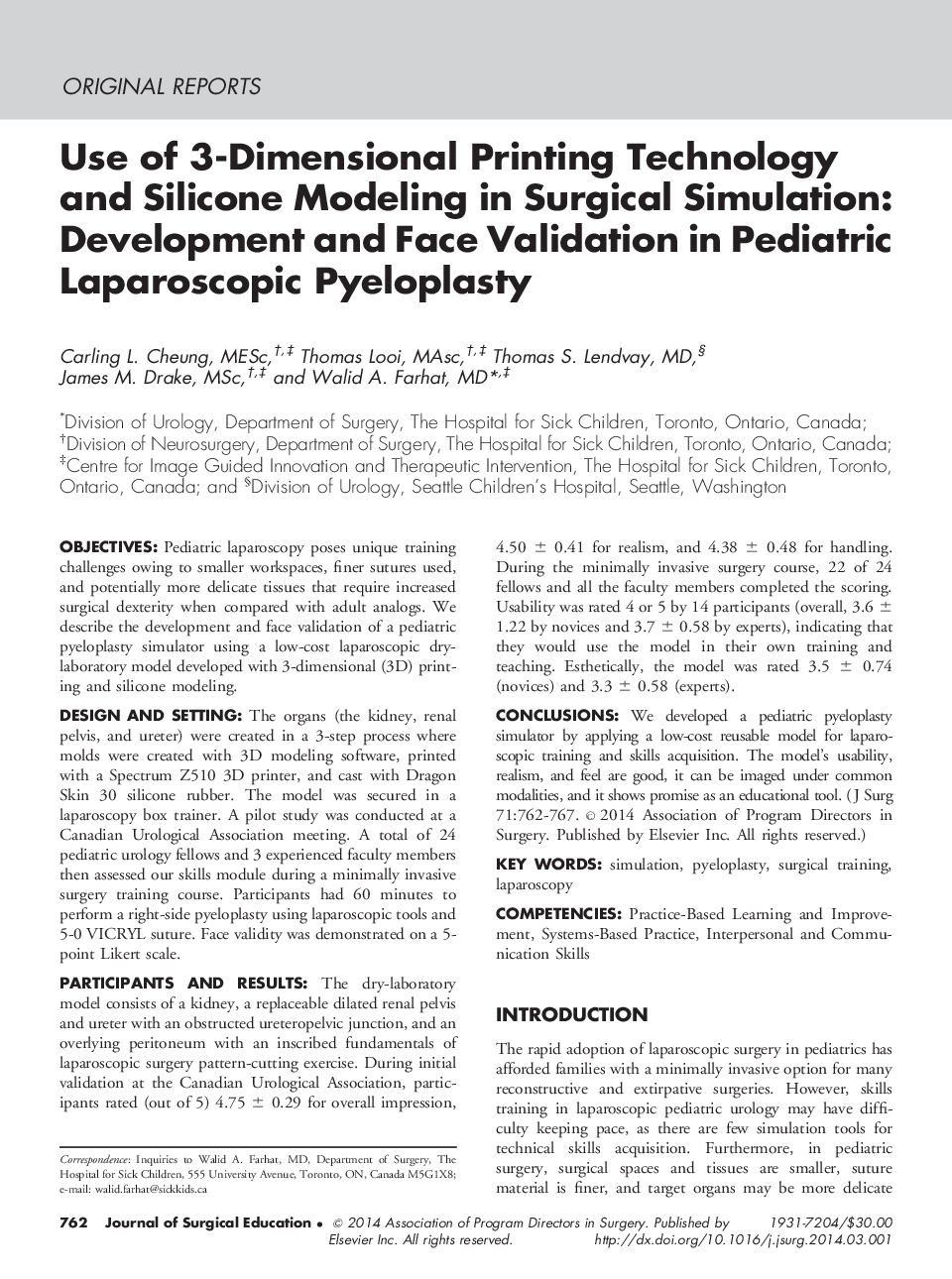| Article ID | Journal | Published Year | Pages | File Type |
|---|---|---|---|---|
| 4297852 | Journal of Surgical Education | 2014 | 6 Pages |
ObjectivesPediatric laparoscopy poses unique training challenges owing to smaller workspaces, finer sutures used, and potentially more delicate tissues that require increased surgical dexterity when compared with adult analogs. We describe the development and face validation of a pediatric pyeloplasty simulator using a low-cost laparoscopic dry-laboratory model developed with 3-dimensional (3D) printing and silicone modeling.Design and SettingThe organs (the kidney, renal pelvis, and ureter) were created in a 3-step process where molds were created with 3D modeling software, printed with a Spectrum Z510 3D printer, and cast with Dragon Skin 30 silicone rubber. The model was secured in a laparoscopy box trainer. A pilot study was conducted at a Canadian Urological Association meeting. A total of 24 pediatric urology fellows and 3 experienced faculty members then assessed our skills module during a minimally invasive surgery training course. Participants had 60 minutes to perform a right-side pyeloplasty using laparoscopic tools and 5-0 VICRYL suture. Face validity was demonstrated on a 5-point Likert scale.Participants and ResultsThe dry-laboratory model consists of a kidney, a replaceable dilated renal pelvis and ureter with an obstructed ureteropelvic junction, and an overlying peritoneum with an inscribed fundamentals of laparoscopic surgery pattern-cutting exercise. During initial validation at the Canadian Urological Association, participants rated (out of 5) 4.75 ± 0.29 for overall impression, 4.50 ± 0.41 for realism, and 4.38 ± 0.48 for handling. During the minimally invasive surgery course, 22 of 24 fellows and all the faculty members completed the scoring. Usability was rated 4 or 5 by 14 participants (overall, 3.6 ± 1.22 by novices and 3.7 ± 0.58 by experts), indicating that they would use the model in their own training and teaching. Esthetically, the model was rated 3.5 ± 0.74 (novices) and 3.3 ± 0.58 (experts).ConclusionsWe developed a pediatric pyeloplasty simulator by applying a low-cost reusable model for laparoscopic training and skills acquisition. The model’s usability, realism, and feel are good, it can be imaged under common modalities, and it shows promise as an educational tool.
